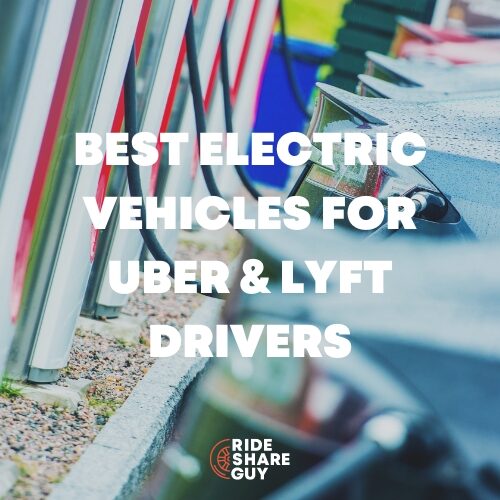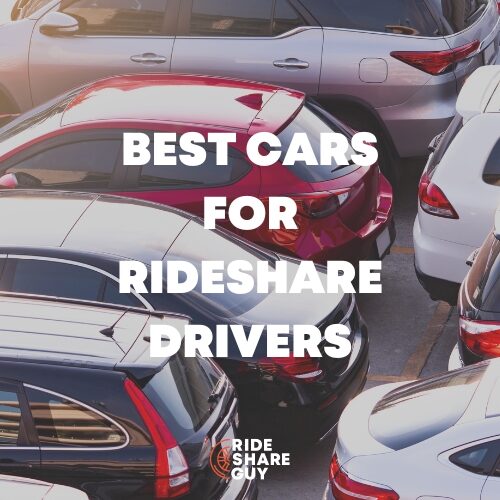Help! My EV is dead and I can’t get up! There must be a way to bring an electricity source to the EV rather than the other way around, right? Well, there is, and Senior RSG EV Writer Gabe Ets-Hokin has found it with a company called Currently. Is it the solution for EV rideshare drivers?
We all know how to buy one of those little red cans of gasoline at the AM/PM when we run out of gas, but what happens when you run your electric vehicle past its last bar of electricity and there’s no charge station in sight? Here in the land of the Big PX, the free market can solve any problem, right? Let’s see what an app called Currently can do in this situation.
Quick summary:
- Currently charges EVs – it’s like the companies that bring you gas for your car if you need it, but this is for electric vehicles
- Available in LA, San Francisco Bay area, and Dallas for now
- Should you try it? It depends!
- Want to chat about all things EV and rideshare related? Join RSG’s EV gig drivers Facebook group!
What is Currently?
If you’re a fan of the NBC show Shark Tank, you may know about million-dollar winner Joshua Aviv’s SparkCharge EV-charging system. Well, if you live in Los Angeles, the San Francisco Bay Area or Dallas, you can experience Aviv’s clever portable-charger technology through Currently, a mobile EV charging service.
Currently’s business model is familiar to anyone with a AAA or any other tow-service membership: a van comes to you and charges your EV’s battery. Like most things these days, it works through a smartphone app, which lets you set up an account, enter your vehicle, location and payment info, and then order a charge.
Who is it for?
Obviously, Currently is for EV drivers. Can the van and technician give drivers in internal-combustion cars a jump start? Yes, they can (for five bucks)! Because sometimes EVs get dead 12-volt batteries too, you know.
That said, Currently claims it can charge any EV on the market today, including Teslas, so the market is anybody with an EV that needs some juice.
What does it do?
Currently uses vans (yes, the service uses electric vans, but I’m not sure if it’s exclusively electric vans) driven by a service technician filled with the Sparkcharge Roadie portable EV charging system.
The setup uses a head unit with a CCS Combo or ChaDeMo plug (Teslas can be “supercharged” with a Korean-market ChaDeMo-to-Tesla adapter) and a charging unit that’s paired with a stack of 65-pound, 3.7 kWh rechargeable batteries. Two of the batteries can be combined to give the head unit 40 amps of continuous power, peaking at 20 kW, but it won’t charge any faster regardless of how many Roadies are stacked atop each other.
Twenty kW isn’t fast; my Chevy Bolt EUV can charge at more than double that speed, and the Kia EV6 I tested can charge about 90 bazillion times faster.* However, the point of Currently isn’t to fast-charge customers’ cars; it’s to conveniently add some range while they’re doing something else.
Once the EV has the requested number of electrons swirling about in its battery—Currently won’t charge the car past 80 percent and can’t add more than 25 kWh—the tech unplugs it and heads to the next charging mission.
The tech I talked to, a patient and hyper-prompt guy, told me he usually charges three or four cars a day and he sometimes drives a couple of hundred miles around the Bay Area, necessitating charging the Currently van itself, sometimes more than once a shift (I forgot to ask if he could plug the van in while he’s driving it). Clearly, this is a work in progress.
How can I sign up for Currently?
That’s probably the best part of using Currently—it’s pretty easy to use. Download the Android or iOS app, create an account, plug in the standard info and your credit card info, make a charging date and request how many kWh you want (no more than 25, which should get most cars about 80-100 miles of range).
You don’t need to leave a key or worry about someone driving your car around. You don’t even have to be with the car, though the tech should be able to easily access it and you should leave the charge port unlocked (and any timers turned off, if necessary).

Pricing depends on your service area and monthly plan. Heavy users will save a few bucks if they opt for the $15/month “commuter” or $30/month “explorer” plans; cheapskates like me only have to pay $5/month, but we also have to pay 69 cents per kWh (about four times what I pay at home) instead of 58 or 51 cents respectively. That means a 25 kWh will cost between $12.75 and $17.25; about the same price as gas for the average dinosaur-burner.
My experience using it was positive, but left me scratching my head. I chatted with the tech as he happily hooked my car up and then waited around for the vehicle to charge. After 45 minutes I couldn’t help but notice he had only added about 10 percent to my car’s range, maybe seven kWh. That would get me less than 30 miles of range, and my credit card got charged $10.35 for the full 15 kW I ordered.
Should I use it?
I guess there are use cases for this, but I can’t imagine using it much. However, if you park on the street and don’t mind paying 2-4 times residential rates for electricity (or double what you’d pay parking at a Level-2 charger at a shopping mall or at work), and can’t spare the 15 minutes you’d need to download 25 kWh from a DCFC I guess Currently is the answer to your prayers?
If you’re wondering about Currently being an emergency on-demand kind of thing, well, it’s not really set up for that, although it is sometimes available same day. In fact, as I’m writing this there’s a charging appointment available in 15 minutes! But that was the first time in several weeks I saw this, and there’s an additional “fast charge” upcharge of $6 for the service.
Will Currently be a Thing?
Since Currently seems to be owned by SparkCharge, the folks making the Roadie, I think it’s more a proof-of-concept/field-testing kind of operation than a serious business model. I mean, the drivers aren’t independent contractors, so they’re making more money than the customer is paying to sit next to a humming metal box while surfing social media. And then he can only do a few charges a day?
But no problem, says Currently. When we reached out to the folks there, a Currently spokesperson told us,
“Currently helps drive EV adoption by eliminating range anxiety and giving EV owners time back by bringing the charge directly to you. A majority of our customers are those who work or live in apartments/condos that don’t have charging infrastructure…[we] also see plenty of single-family homeowners that may have level 1 or level 2 charging capabilities at home, but doesn’t always meet the need for them on certain occasions.”
Maybe I lack vision, but I don’t see this as being a particularly profitable venture, even if they figure out how to deliver more power cheaper. The use cases they list are very limited, as polling frequently tells us the great majority of EV owners charge at home, sometimes as much as 95 percent. And how much good does that max charge of 25 kWh do, anyway? I can see the utility of a service like this, although being able to schedule same-day charging seems a no-brainer, but I understand the logistical challenges given the equipment they have.
Still, it’s a nice, reliable service that could make EV ownership possible for those who can’t park their car in a charging spot every night. And while most EV rideshare workers drive too many miles a year for this to be convenient, it could work for the (many) EV drivers who just drive a few hours a week.
Give it a try and tell us what you think!
Have you used Currently? Or a service like it? Tell us about it below, or check out our Uber/Lyft EV Driver Facebook group for more EV-related tips and tricks!
*You’re right, Max Plank, there is no such number as “bazillion,” (though maybe there should be to allow start-up CEOs to describe the profits their investors will soon be rolling in) so I am obviously making this up. But the EV6’s fast-charge speed, which can add 70-ish miles of range in four minutes, is so ridiculously fast it doesn’t matter.
-Gabe @ RSG




